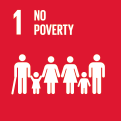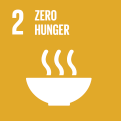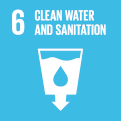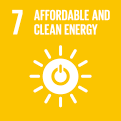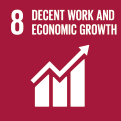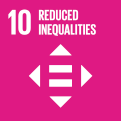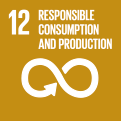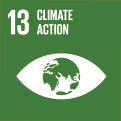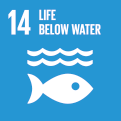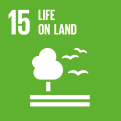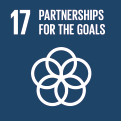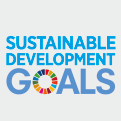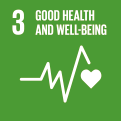
Global level
GOAL 3: Ensure healthy lives and promote well-being for all at all ages.
“Over the past 15 years, reproductive, maternal and child health have improved greatly. The incidence of communicable diseases has declined, as have premature deaths from non-communicable diseases. Health services have been upgraded through better maternal and reproductive care, targeted disease elimination and control programmes, including broader treatment and vaccination coverage, and increased funding to support medical research and basic health in developing countries. To meet the 2030 targets, however, these interventions need to be expanded, particularly in regions with the highest burden of disease.”
Source: United Nations, The Sustainable Development Goals Report 2017
Targets:
-
3.1By 2030, reduce the global maternal mortality ratio to less than 70 per 100,000 live births.
-
3.2 By 2030, end preventable deaths of newborns and children under 5 years of age, with all countries aiming to reduce neonatal mortality to at least as low as 12 per 1,000 live births and under-5 mortality to at least as low as 25 per 1,000 live births.
-
3.3 By 2030, end the epidemics of AIDS, tuberculosis, malaria and neglected tropical diseases and combat hepatitis, water-borne diseases and other communicable diseases.
- Indicator 3.3.1 Number of new HIV infections per 1,000 uninfected population, by sex, age and key populations
- Indicator 3.3.2 Tuberculosis incidence per 100,000 population
- Indicator 3.3.3 Malaria incidence per 1,000 population
- Indicator 3.3.4 Hepatitis B incidence per 100,000 population
- Indicator 3.3.5 Number of people requiring interventions against neglected tropical diseases
-
3.4 By 2030, reduce by one third premature mortality from non-communicable diseases through prevention and treatment and promote mental health and well-being.
-
3.5 Strengthen the prevention and treatment of substance abuse, including narcotic drug abuse and harmful use of alcohol.
- Indicator 3.5.1 Coverage of treatment interventions (pharmacological, psychosocial and rehabilitation and aftercare services) for substance use disorders
- Indicator 3.5.2 Alcohol per capita consumption (age 15 years and older) within a calendar year in litres of pure alcohol
-
3.6 By 2020, halve the number of global deaths and injuries from road traffic accidents.
-
3.7 By 2030, ensure universal access to sexual and reproductive health-care services, including for family planning, information and education, and the integration of reproductive health into national strategies and programmes.
-
3.8 Achieve universal health coverage, including financial risk protection, access to quality essential health-care services and access to safe, effective, quality and affordable essential medicines and vaccines for all.
- Indicator 3.8.1 Coverage of essential health services
- Indicator 3.8.2 Proportion of population with large household expenditures on health as a share of total household expenditure or income
-
3.9 By 2030, substantially reduce the number of deaths and illnesses from hazardous chemicals and air, water and soil pollution and contamination.
- Indicator 3.9.1 Mortality rate attributed to household and ambient air pollution
- Indicator 3.9.2 Mortality rate attributed to unsafe water, unsafe sanitation and lack of hygiene (exposure to unsafe Water, Sanitation and Hygiene for All (WASH) services)
- Indicator 3.9.3 Mortality rate attributed to unintentional poisoning
-
3.a Strengthen the implementation of the World Health Organization Framework Convention on Tobacco Control in all countries, as appropriate.
- Indicator 3.a.1 Age-standardized prevalence of current tobacco use among persons aged 15 years and older
-
3.b Support the research and development of vaccines and medicines for the communicable and non communicable diseases that primarily affect developing countries, provide access to affordable essential medicines and vaccines, in accordance with the Doha Declaration on the TRIPS Agreement and Public Health, which affirms the right of developing countries to use to the full the provisions in the Agreement on Trade-Related Aspects of Intellectual Property Rights regarding flexibilities to protect public health, and, in particular, provide access to medicines for all.
- Indicator 3.b.1 Proportion of the target population covered by all vaccines included in their national programme
- Indicator 3.b.2 Total net official development assistance to medical research and basic health sectors
- Indicator 3.b.3 Proportion of health facilities that have a core set of relevant essential medicines available and affordable on a sustainable basis
-
3.c Substantially increase health financing and the recruitment, development, training and retention of the health workforce in developing countries, especially in least developed countries and small island developing States.
- Indicator 3.c.1 Health worker density and distribution
-
3.d Strengthen the capacity of all countries, in particular developing countries, for early warning, risk reduction and management of national and global health risks.
- Indicator 3.d.1 International Health Regulations (IHR) capacity and health emergency preparedness
- Indicator 3.d.2 Percentage of bloodstream infections due to selected antimicrobial-resistant organisms
Last updated: 01. 07. 2020

